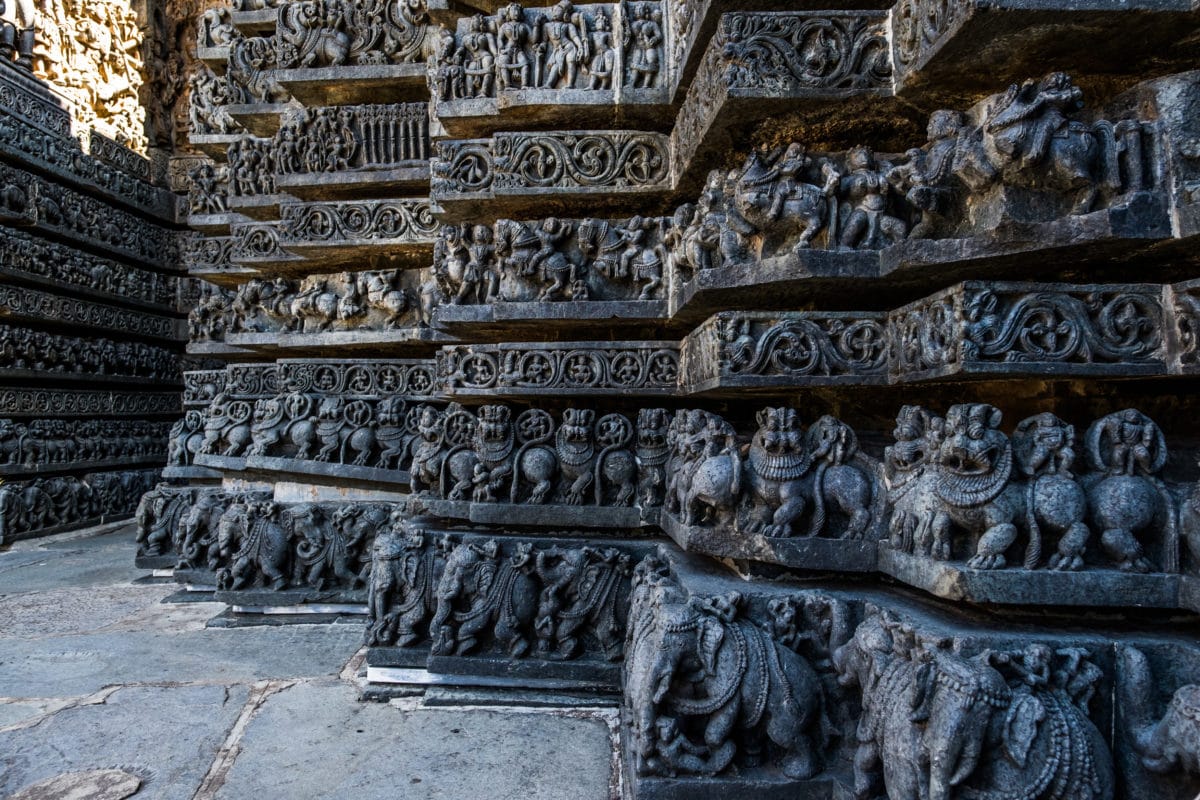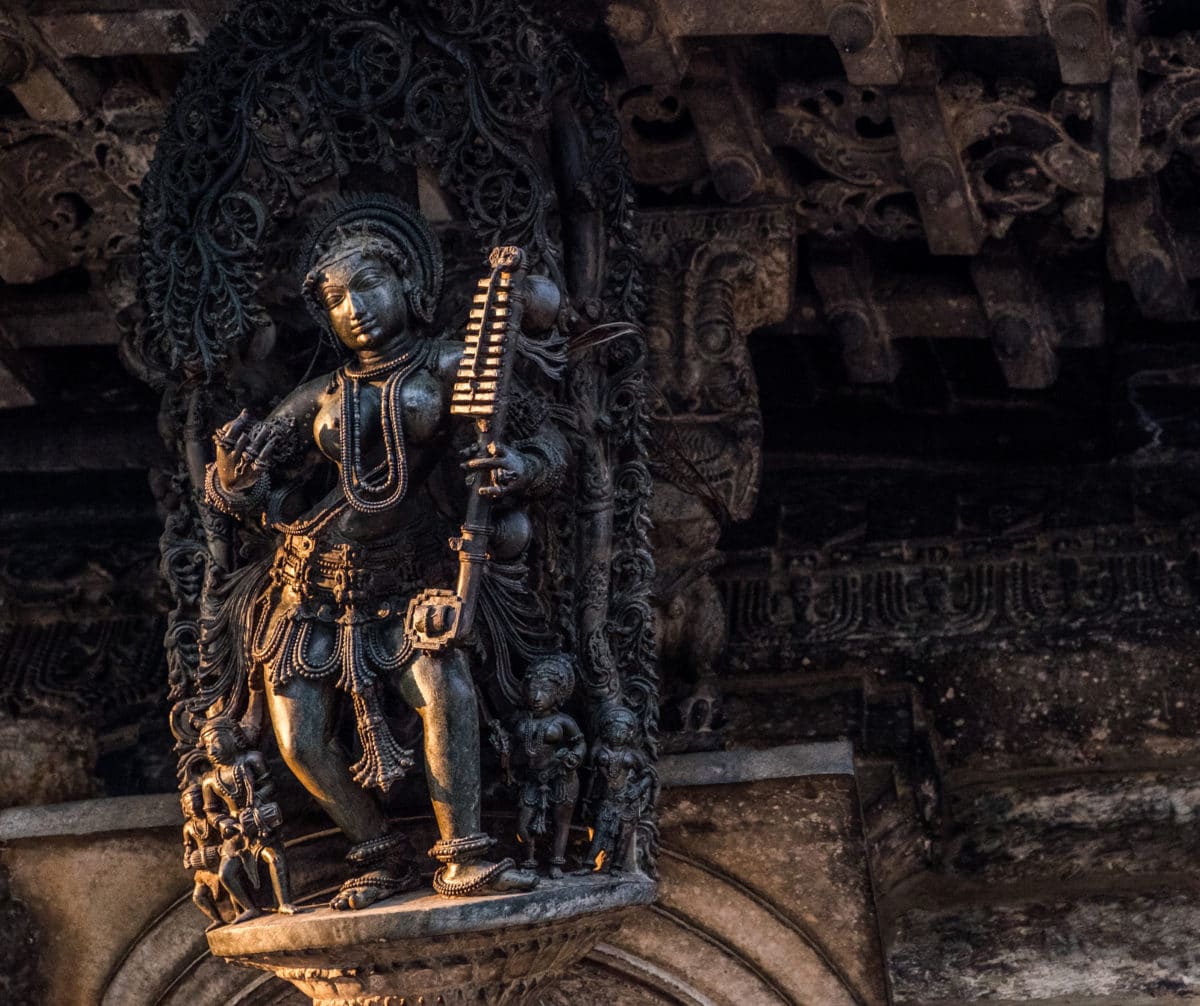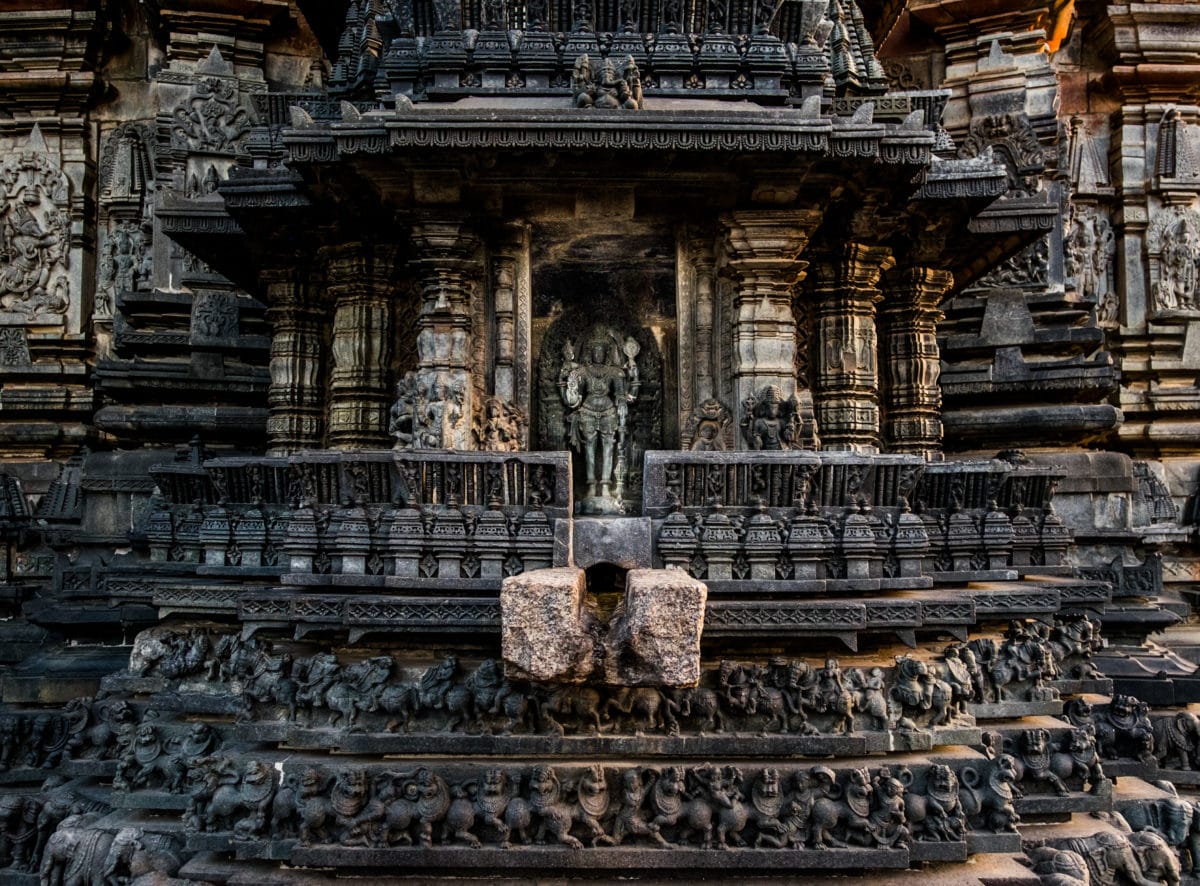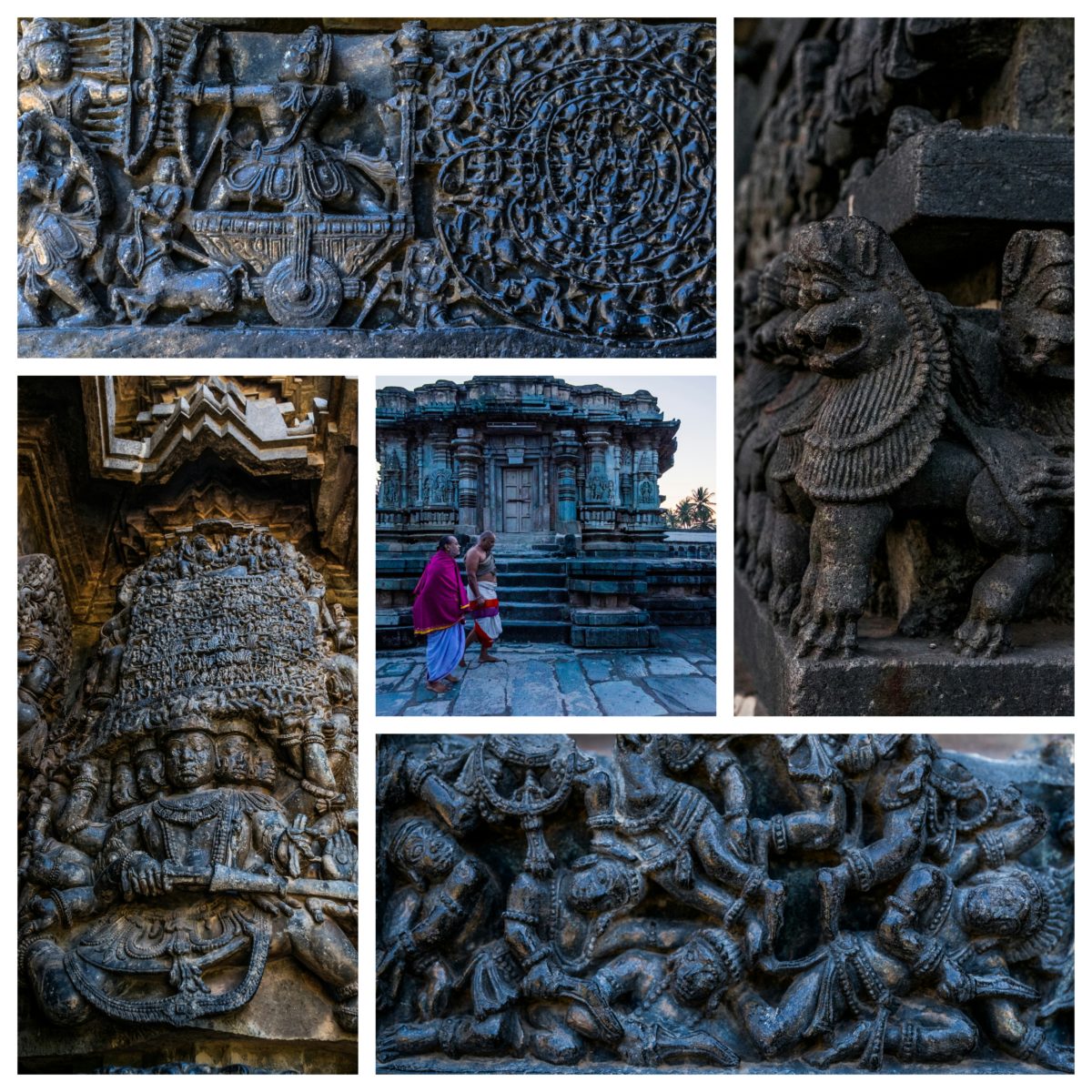The one advantage of having loosely planned travels and time to spare is that one can change direction if something catches your fancy. Which is exactly what we did, when we were in the hills of southern Karnataka and were told about the wonders of Belur and Halebidu. A mouthful to pronounce even for Indians, we were planning to skip these towns and temples in favour of other places. We’d seen plenty of temples in Tamil Nadu, and figured we’d skip yet another barefooted walk around a place of worship. But after we heard a few people extol the wonders of the two temples and so we said, why not ! lets go check them out.
Plans were changed around a little, a hotel was booked, and we took off from Coorg to Belur, a five hour bus ride away. We only had two half days to explore both the towns, which are 16km apart and we figured, with a little extra effort it would be possible. We arrived late afternoon in Belur, and after an unexpectedly good lunch at the small hotel, we set off to see the 900 year old Chennakesava Temple, dedicated to the Hindu god Vishnu. Built in 1117AD by King Vishnuvardhana in commemoration of his victory over the Cholas, it is famous for the Hoysala style of workmanship and purportedly took 103 years to be completed. After dutifully depositing our footwear at the designated spot, we entered the main temple gate, similar to the towering gates we had seen in Tamil Nadu, but nowhere near as imposing. The sun was setting and the light was soft, giving the stout one storied temple a warm glow. Walking up the few stone steps to the main building, there was an instinctive unspoken agreement, we were very happy we’d made the detour. The temple, the carvings, the statues and friezes were nothing short of magnificent!

In a clockwise direction, the Vishnu temple has detailed stories from Hindu scriptures and mythology, and tells tales of life from a bygone era. The outer walls are covered with carvings of elephants, lions, horses, dancing celestial nymphs, flowers, and scenes of daily life, each extremely intricate and detailed. It is hard to imagine that the structure was over nine centuries old and entirely carved only in stone. The pillars with the dancing girls, which are some of the more famous of the statues, are beautiful and delicate, and it seems that the sculptor has immortalised the Hoysala beauties in stone. The women all have different expressions and would serve as muses for any of the great masters.

The temple at Halebidu, which we visited the next day, is just as stunning and beautiful. The temple is dedicated to Shiva, and took almost 200 years to finish. Walking around the temple, with the entire Ramayana carved on the outer walls, it is easy to see why it would have taken that long. The depiction of the story of ram and sita, as well as their children, rivals any depiction on paper and canvas. Even without a guide and with basic knowledge of the great epic, you can follow the story on stone and lose yourself in the amazing prowess and artistry of the 12th century sculptors. The Hoysala rulers and their wives were great patron of the arts and you can’t but help silently thank them for nurturing and encouraging such talent. Though some of the Kings and their wives were followers of Jainism, they still commissioned works of art and architecture that depicted the Hindu religion and mythology, attesting to their tolerance and pluralism.

The epitome of Hoysala workmanship, both the temples at Belur and Halebidu, are simply stunning structures and amazing examples of human talent and skill. We must also mention the excellent restoration work done by the Archeological Society of India, where in places it is hard to tell the difference between the old and the new. Whatever your religious leaning, if any at all even, a visit to these two towns is not the run of the mill ‘temple’ visit. It is journey into a time long past and the chance to experience and appreciate what some would consider to be amongst the greatest artistic achievement in South India.

Some useful information:
How to get There: Belur and Halebidu are about an hour from Hasan by buses which leave every half hour. Hasan is a major transport hub with connections to Bangalore, Mysore and other cities across Karnataka, both by bus and train. Mysore is the closest major city in Karnataka.
Where to Stay: The Karnataka Tourism property, Hotel Mayura at Belur, is your best option for a one night stay. The rooms are large, clean and reasonably priced between Rs 1000 – 1500, with a surprisingly good restaurant that has both vegetarian and non vegetarian options, as well as beer and other alcohol.
How long do you need: Only 16km apart, both the temples can be done in a day. However to prevent it from being an overwhelming experience we suggest you spend a night.
What you should know: Despite their legacy, Belur and Halebidu are not popular stops along the tourist trail and whilst this makes for an engaging experience, the options to stay and eat are limited. Don’t expect luxury.
Wonder clicks…informative post….wanna visit this place….
It’s one of the best places we have visited on our travels. Inadvertently, it’s become the bar we compare all temple architecture against!